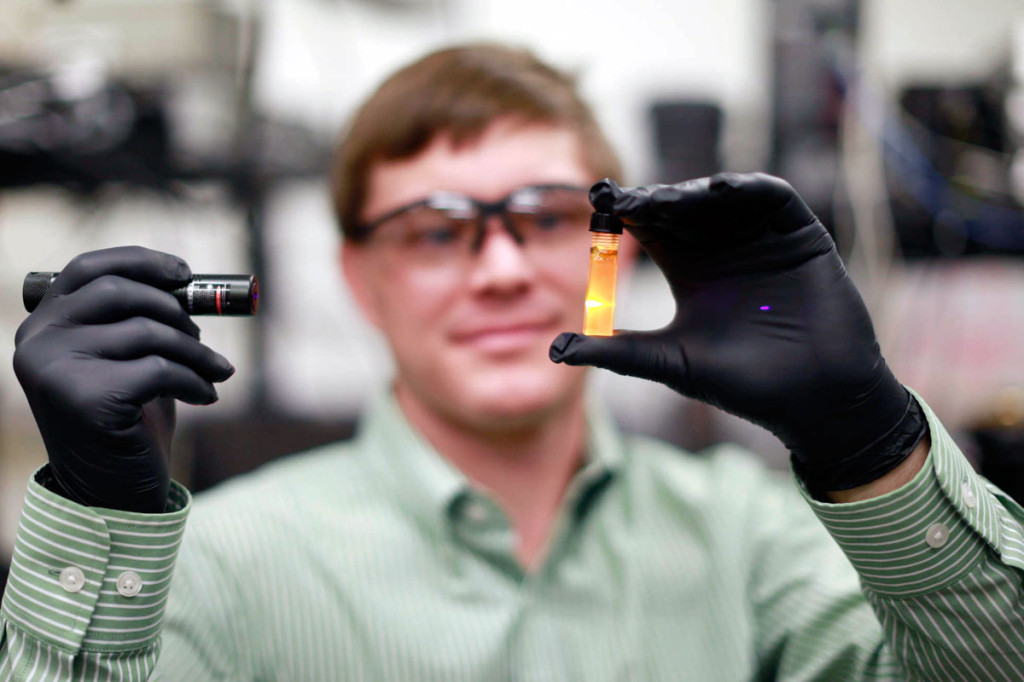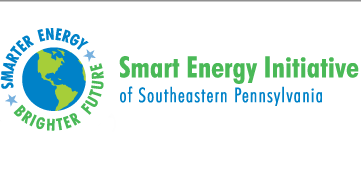Monday November 23rd 2015
From Philly.com:
 Solar panels accounted for one-third of all new electricity generation installed in the United States in 2014, up from just 10 percent two years earlier.
Solar panels accounted for one-third of all new electricity generation installed in the United States in 2014, up from just 10 percent two years earlier.
With interest expected to keep rising, many research groups are on the hunt for ways to boost efficiency.
Among them is a team at the University of Delaware, which is developing materials to harness portions of the sun’s spectrum that in today’s conventional solar panels are largely wasted.
The key is a property of a panel’s semiconductor material called the band gap, an electronic hurdle of sorts. Light particles – photons – with enough energy to clear the bar are converted into electricity, while those with lower energy are lost mostly as heat.
The Delaware researchers believe their materials would combine the energy from two low-energy particles to make one photon with enough energy to clear the hurdle.
The research, funded by a $1 million grant from the Los Angeles-based W.M. Keck Foundation, involves using extremely thin layers of semiconductors to coax electrons to higher energy states.
“We call it the ratchet,” said Delaware’s Matt Doty, an associate professor of materials science and engineering.
It is a perennial industry guessing game to predict which of the next-generation technologies can be made cheaply enough to be worth putting on rooftops.
Solar installations benefit from an investment tax credit that is set to expire next year, though Congress is considering an extension. In an analysis this month, Deloitte Center for Energy Solutions said that true “grid parity,” defined as cost-competitiveness without subsidies, is still years away in most of the country.
But in Pennsylvania, utility-scale solar plants could be competitive with other new power-plant installations as soon as next year, because wholesale power prices here are relatively high, the analysis found.
Doty, along with Delaware colleague Joshua Zide and others, wants to push the technology even further by taking a new stab at an old idea.
Previous efforts to combine the energy from low-energy photons – a concept called photon upconversion – have resulted in poor efficiency.
The Delaware team is tackling the problem by fabricating high-purity, ultrathin films of gallium and indium compounds, deposited in precise amounts with a process called molecular beam epitaxy.
The process is carried out in a vacuum, inside a silvery machine where the pressure is less than one-trillionth that of the air on the Earth’s surface, said Zide, an associate professor of materials science and engineering at Delaware.
Numerical models suggest that solar panels made with this method and configuration of compounds could, in theory, achieve efficiencies in the high-30 percent range, Doty said. Conventional silicon-based solar panels, by comparison, are generally no more than 22 percent efficient.
But the molecular-beam method is expensive, so at the same time Delaware is experimenting with another way of combining the energy from low-energy photons that is cheaper, though not as efficient.
This parallel approach involves creating a solution of tailored nanoparticles that could be applied to the back of solar panels like paint.
The paint might boost conventional panel efficiency by 3 percentage points, to 25 percent, or more, Doty hopes.
Read more at Philly.com…



